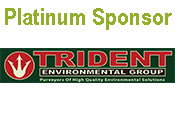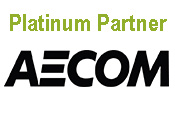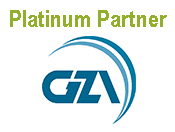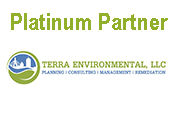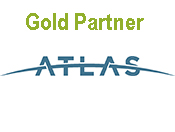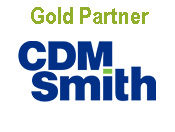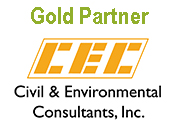By: James J. Decoulos, P.E., LSP; James Curtis, P.E., LSP; Richard Eurich, Esq.; and Arthur Kreiger, Esq.
At the May 8, 2014 LSPA Membership Meeting, the Loss Prevention Committee presented a special program on the complexities of insurance coverage issues at contaminated sites - especially homeowner sites. This article is intended to provide a brief summary of the issues discussed at the meeting. Note, it is impossible in this brief article to provide a full discussion of all the relevant issues that come into play in evaluating insurance. Further, the exact coverage that is provided by a particular policy depends on the language of the policy, and the generalizations discussed at the meeting may not apply.
The program was developed by the Loss Prevention Committee and the panelists, who were:
- Attorney Arthur ("Art") Kreiger of Anderson & Kreiger LLP, who provided the perspective of counsel for the insured;
- Attorney Richard ("Rick") Eurich of Morrison Mahoney LLP, who provided the perspective of the insurance companies; and
- James ("Jim") Curtis, PE, LSP, of Cooperstown Environmental, who provided the perspective of an LSP for the insured.
James J. Decoulos of Decoulos & Company, LLC moderated the event. The program provided point, counterpoint discussion on three questions.
1. When does the insurance coverage come into play at a site?
A release of oil or hazardous material on residential or business property may lead to significant assessment and cleanup costs. The owner or operator must find money to pay for the work, and typically there are few options: savings, a loan or mortgage, claim financial inability (a rigorous process with MassDEP), insurance, or identifying a PRP with responsibility.
A homeowner policy covers damages to property of the insured (the first party) such as the roof of the home if damaged by a covered event. This first-party, property side of the policy does not cover damage to land. Nor does it cover pollution, except in very rare instances. A homeowner policy also covers certain harms sustained by third parties. While this could include MCP response actions required by law, unfortunately, in most cases the homeowner policy will not provide any coverage due to the "owned-property" exclusion. Art explained that this exclusion means that, at best, coverage is not implicated until there is a threat that the release will reach another person's property or at least the groundwater. In most cases, the third-party liability side of the homeowner policy will not provide any coverage because of this exclusion. A number of court cases have reached this issue, but if there is a "bright line" in Massachusetts, it has not yet been determined.
Art suggested rather than parsing the policy, the best course of action when a release occurs and there is a possibility of insurance coverage is to file a claim with the insurance company. If there is a delay in notifying the insurance company which may result in prejudice to the insurance company, that delay may provide a basis for denying the claim. Rick agreed, and added that some policies specifically state that the insurer will not pay for costs or expenses incurred by the insured without the insurance company's written consent.
Finally, a member of the audience asked about the recently enacted state law that requires homeowner insurance companies to offer coverage for fuel releases from above-ground storage tanks where specific improvements have been made. Rick explained that this coverage, when available, provides coverage with no "owned-property" exclusion, so coverage should be available to pay for cleanup and damage to personal property, up to the limit stated in the coverage, even if only the insured's property is impaired. An informal survey suggests that adding an amendment to the homeowner policy (commonly referred to as a "rider") to add this coverage typically costs less than $100 per year.
2. How does the LSP exercise discretion to address obligations under the MCP and to his/her client?
Art explained that in many cases, the insurance company will respond to notice of a claim with a reservation of rights. This essentially means that the insurer is continuing its evaluation of the claim and in some cases paying some costs associated with the claim, while deciding whether to deny the claim. In most other cases, the insurance company will issue a denial. An environmental attorney can assist in negotiating with the insurance company.
In terms of the response costs, where a reservation of rights has been issued or the claim has been accepted, the insurer should be kept informed of the response actions. In some instances, the insurance company may disagree with the course of action that the LSP has proposed. In these cases, the LSP must be cognizant of his or her professional responsibility, and the obligation to ensure that the requirements of the MCP are met. It may be that the critiques of the insurance company's representative are constructive and lead to more efficient response actions but Jim referred to one instance where that was not the case. In that instance the representative of the insurer implied that the proposal to install monitoring wells was a ruse to cause contamination and therefore trigger coverage. Rick indicated that if this were to happen, it would be improper, and may expose the insurance company to liability under certain consumer protection laws.
3. What are the differences between defense and indemnity coverages under the various liability policies?
Most liability policies have a limit for indemnity, but not for defense. Because these are legal terms that are used frequently in the insurance arena, Rick and Art spent a few moments describing what they mean.
Under a liability policy, indemnity refers to payments by the insurer to make the insured whole - to pay the damages sustained by a third party for which the insured is liable - when the insured must pay the third party for damage to that party's property. For an environmental claim, this refers to the costs of cleanup (assuming cleanup is covered under the policy).
Defense refers to the costs to defend the insured from the claim. In a traditional lawsuit, these are the costs of an attorney to defend the case. For an environmental claim, they also can include the costs to investigate the site and take other steps under the MCP. Investigation costs may include, in part, some of the fees charged by LSPs for their services, usually those associated with testing, monitoring and assessment activities.
Art argued that defense costs could include Immediate Response Actions and Release Abatement Measures, even where some soil excavation and disposal or similar work occurs. Rick argued that the name and timing of the work is not relevant. If it is cleanup, it is indemnity; and if it is investigation, it is defense. This can be very important. In some cases, defense costs are not capped, but indemnity costs always are capped by the insurance limit.
The presentation demonstrated how complex insurance coverage can be at contaminated sites. Art and Rick made it clear that there are many different legal arguments that the insured and the insurance companies can pursue based on the individual policy and the unfolding case law. Therefore, LSPs should consider referring clients to legal counsel who are familiar with these issues and their interrelationship to Chapter 21E and the MCP.
The Loss Prevention Committee hopes that the LSPA community found this presentation helpful.



